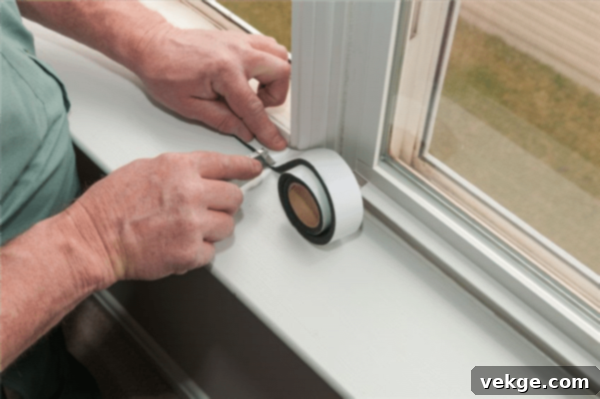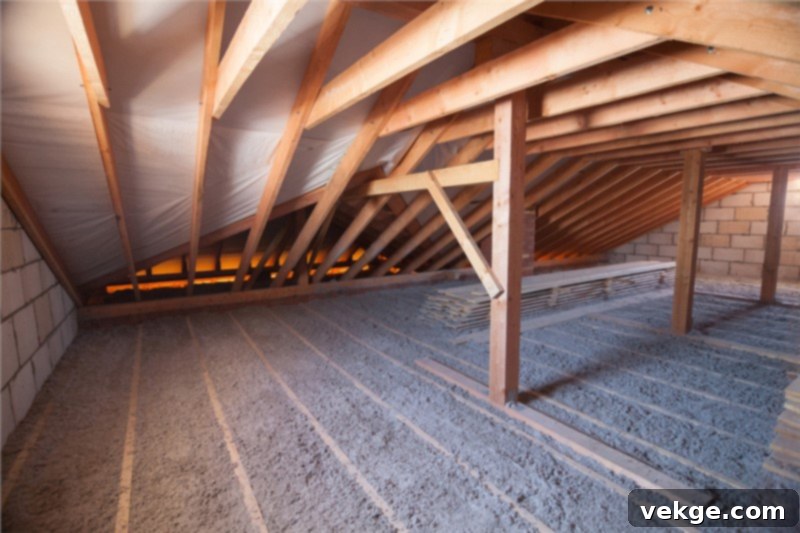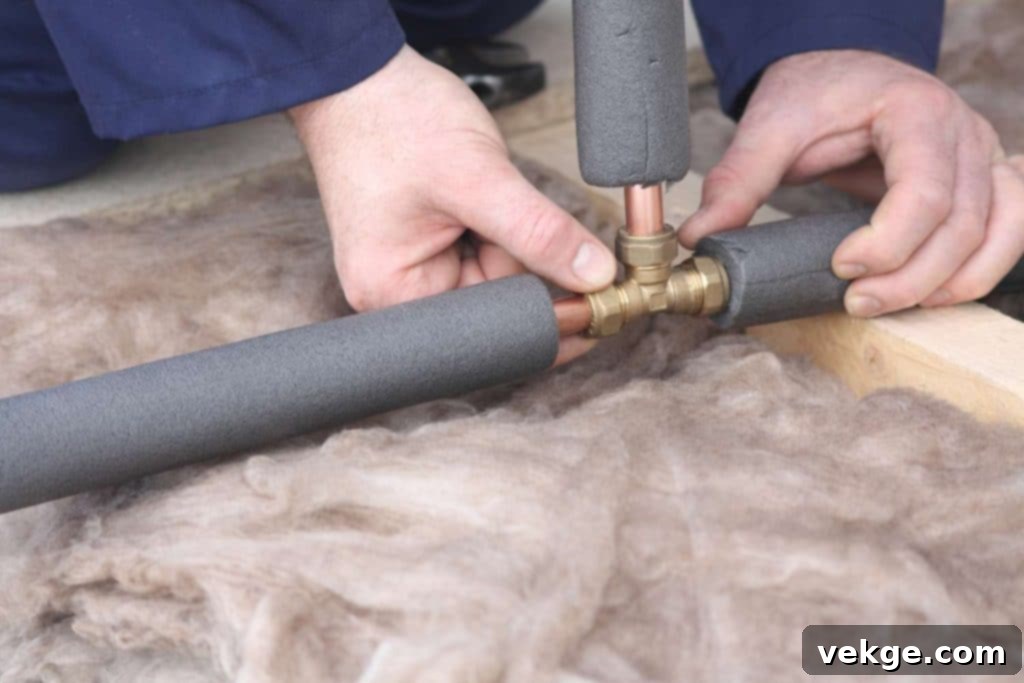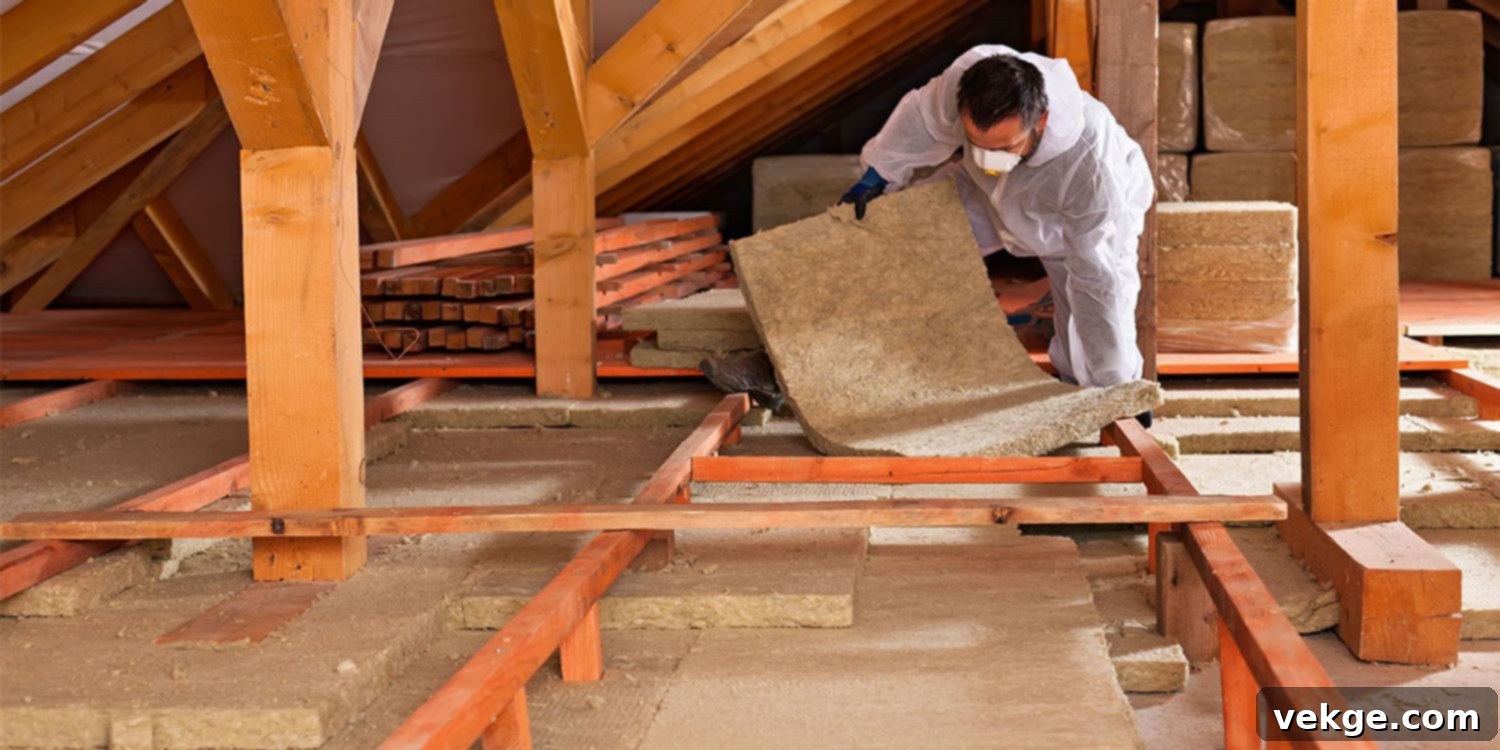Budget-Friendly Home Insulation: Smart Strategies for Energy Efficiency and Savings
Insulating your home is one of the most effective ways to achieve several critical goals: significantly reducing your heating and cooling expenses, maintaining a consistently pleasant indoor temperature, and substantially enhancing your home’s overall energy efficiency. These benefits not only contribute to your financial well-being but also to a more comfortable and sustainable living environment.
However, the prospect of undertaking home insulation projects can often seem daunting, primarily due to the perceived financial burden. Many homeowners worry about the high costs associated with professional insulation upgrades. The good news is that achieving better home insulation doesn’t have to break the bank. There’s a wide array of affordable, practical options available that empower homeowners to boost their home’s energy performance without accumulating debt.
This comprehensive guide, created in collaboration with WoodVeneerHub, an organization specializing in high-quality decorative panels, is designed to help you keep your home warm in the winter and refreshingly cool in the summer. We’ll explore various budget-friendly strategies that deliver real results, making energy efficiency accessible to everyone.
Start with an Energy Audit: Pinpointing Your Home’s Weak Spots
Before you invest any time or money into insulation, the most crucial first step is to understand exactly where your home is losing energy. This is precisely what an energy audit accomplishes. It’s like a diagnostic check-up for your house, revealing the hidden culprits behind high utility bills and uncomfortable drafts.
Many utility providers offer energy audits to their customers, often at no cost or a significantly reduced rate. This is a standard service for these companies, as helping customers reduce consumption benefits everyone. During an audit, a professional will typically inspect your home from top to bottom, using specialized tools like infrared cameras to detect thermal leaks, checking insulation levels in attics and walls, and examining the efficiency of your HVAC system. The results of an audit can help you zero in on the exact areas that need attention most, allowing you to direct your efforts and resources where they will have the greatest impact and yield the highest return on investment. Even if a professional audit isn’t immediately feasible, you can perform a basic DIY energy audit by carefully inspecting windows, doors, electrical outlets, and plumbing penetrations for visible gaps or drafts.
Seal All Gaps: Weatherstripping and Caulking Doors and Windows
One of the most common and significant causes of energy loss in any home is the presence of cracks and leaks around openings designed for ventilation, such as doors and windows. These seemingly minor gaps can allow a substantial amount of conditioned air to escape and unconditioned air to infiltrate, forcing your heating and cooling systems to work harder. Fortunately, sealing these openings is both an efficient and remarkably economical way to improve your home’s insulation and overall comfort.
Applying weatherstripping to the moving parts of windows and doors, and caulk to stationary gaps around frames, is a simple DIY project with immediate benefits. Weatherstripping, available in various materials like foam, rubber, vinyl, or felt, creates a seal when doors and windows are closed. Caulk, a flexible sealant, is perfect for filling non-moving gaps around window and door frames, utility penetrations, and foundation cracks. You can find these essential supplies for just a few dollars at your local hardware store. The installation process is straightforward, with clear instructions provided by manufacturers, making it an accessible task for most homeowners. By addressing these easily overlooked areas, you’ll notice a significant reduction in drafts and a more stable indoor temperature, leading directly to lower energy bills.
Enhance Windows with Heat-Insulating Films

Windows are often major culprits for heat loss in winter and heat gain in summer. While replacing old, inefficient windows can be costly, applying window insulation film offers a much more affordable and impactful solution. This transparent plastic material, easily applied to the inside of your window panes, creates an additional insulating layer that significantly reduces heat transfer. Some films also offer UV protection, helping to prevent fading of furniture and flooring.
In addition to being exceptionally cheap, window films can drastically cut down on the amount of heat that escapes through your windows during colder months, making your house noticeably cozier. During warmer seasons, they help block solar heat gain, contributing to a cooler indoor environment. The installation process is typically straightforward and non-complicated, often involving simply cleaning the window, applying the film, and using a hairdryer to shrink it taut. Many homeowners can easily install these films themselves, requiring no professional assistance. This simple, DIY upgrade can have a major impact on your home’s energy consumption and comfort levels throughout the year.
Utilize Effective Draft Stoppers
Drafts aren’t just annoying; they are a direct pathway for conditioned air to escape and unconditioned air to enter, making your home less comfortable and your energy bills higher. A simple and incredibly inexpensive way to combat this problem and keep warm air in and cold air out during the winter (and vice-versa in summer) is to strategically place draft stoppers. These can be positioned at the base of doors, on window sills, or even in front of less-used fireplaces.
Many options exist for where to purchase draft stoppers, from basic fabric tubes filled with sand or beads to more decorative designs. However, for a truly budget-friendly and eco-conscious solution, you can easily make your own draft stoppers from old towels, clothes, or fabric scraps. Simply roll or stuff the material into a tube shape, secure it, and place it where needed. This not only saves money but also repurposes items that might otherwise be discarded. Beyond doors and windows, consider other common draft sources like unused pet doors, electrical outlets on exterior walls, and gaps around plumbing pipes. Addressing these small leaks with draft stoppers or simple foam gaskets can collectively make a big difference in maintaining your home’s thermal envelope.
Improve Attic Insulation: A Key to Whole-Home Efficiency

The attic is arguably one of the most critical areas in your home for heat retention and loss. Since heat naturally rises, a poorly insulated attic acts like an open chimney, allowing warm air to escape rapidly in winter. Conversely, in summer, it allows scorching heat from the sun to radiate into your living spaces. Therefore, significantly increasing the amount of insulation in your home’s attic is often the single most effective method to make your entire home more energy-efficient and comfortable.
While hiring a professional insulation installer can be a substantial investment, many attic insulation tasks can be remarkably efficient and cost-effective do-it-yourself projects for homeowners. There are several DIY-friendly insulating materials available. These include, but are not limited to, fiberglass batts (pre-cut rolls or sections that fit between joists), and blow-in cellulose (a loose-fill material often made from recycled paper, requiring a rental blower but offering excellent coverage). Before starting, ensure adequate ventilation in your attic, seal any air leaks around penetrations (like plumbing vents and electrical wires), and wear appropriate safety gear. By topping up existing insulation or installing new layers, you can dramatically improve your home’s thermal barrier and see a rapid return on your investment through lower utility bills.
Utilize Reflective Insulation (Radiant Barriers)
Especially in regions with intense summer heat and abundant sunshine, a significant portion of heat gain comes from solar radiation. One highly effective and surprisingly affordable way to combat this radiant heat and reduce the temperature inside your house is by installing reflective insulation, often known as radiant barriers, in your attic. When the temperature is high, this comes in very handy by reflecting radiant heat away from your living spaces rather than absorbing it.
Radiant barriers are typically made from highly reflective materials like aluminum foil, often laminated onto a substrate. They work by reflecting heat energy that travels through the roof, preventing it from radiating down into the attic space and subsequently into your home. This type of insulation is a lifesaver, particularly in very sunny climates, keeping your attic cooler and reducing the workload on your air conditioning system. Another advantage for one’s financial condition is that it can often be implemented without the assistance of a professional. Radiant barrier foil can be stapled to the underside of the roof rafters, making it a relatively simple DIY project that offers a significant reduction in cooling costs.
Insulate Water Heaters and Pipes for Efficiency

Hot water is a daily necessity, but heating it can be a significant energy expense. Heat loss from your water heater tank and the pipes that deliver hot water can unnecessarily increase this cost. By insulating your water heater and its pipes, you can prevent this heat loss, thereby reducing the quantity of energy needed to heat water and maintain its temperature.
Insulation blankets for water heaters and foam pipe insulation for pipelines are both easy to install and won’t cost a fortune. A water heater insulation blanket, specifically designed for this purpose, wraps around the tank, reducing standby heat loss. This is particularly effective for older water heaters or those located in unconditioned spaces like basements or garages. Foam pipe insulation, which comes in pre-slit tubes, simply slips over your hot water pipes, preventing heat dissipation as water travels to your faucets. Both interventions are simple DIY projects that offer a rapid return on investment, as the decrease in energy expenses for water heating will quickly offset the minimal upfront cost. Ensure you follow manufacturer instructions for safe installation, especially regarding clearances around burner access and temperature/pressure relief valves on water heaters.
Incorporate Plush Carpets and Thermal Drapes into Your Decor
While not a substitute for structural insulation, incorporating thick drapes, thermal curtains, and plush rugs into your interior design scheme can significantly contribute to your home’s thermal comfort and energy efficiency. These elements act as passive insulators, creating an additional barrier against heat loss or gain through windows and floors. Thick drapes and thermal curtains, often lined with a reflective or insulating material, can effectively block drafts and prevent heat from escaping through windows in winter, or unwanted solar gain in summer. They provide an extra layer of insulation that can be particularly beneficial at night or on extremely hot or cold days.
Similarly, rugs and carpets add a layer of insulation to your floors, especially important if you have uninsulated subfloors or live above a cold basement or crawl space. They help to prevent heat from escaping through the floor and also make the room feel warmer underfoot. This method is particularly advantageous for renters or those without the immediate means to make substantial, long-term structural improvements to their homes. It’s a low-cost, aesthetically pleasing approach that offers immediate comfort benefits, complementing more permanent insulation efforts and enhancing the overall coziness of your living space.
Explore Energy Program Funding and Incentives
Navigating the costs of home improvements, even budget-friendly ones, can be made easier with external support. Various governments (local, state, and federal) and utility providers frequently offer a range of assistance packages, rebates, tax credits, and subsidies designed to encourage energy-efficient upgrades. It is entirely possible that these initiatives may cover a significant portion, if not all, of the expense for renewable energy maintenance or general home energy efficiency improvements.
These programs often target homeowners looking to invest in insulation, window upgrades, HVAC improvements, or even comprehensive home energy retrofits. Eligibility criteria can vary based on income, location, or the specific type of improvement. If you are interested in seeking financial support for more extensive insulation efforts or even smaller projects, it is highly advisable to research these programs thoroughly and submit an application. Many utility companies offer online tools to help you identify applicable rebates, while government websites provide information on federal and state incentives. Taking advantage of these opportunities can make significant energy upgrades much more affordable, dramatically reducing your out-of-pocket expenses while increasing your home’s value and comfort.
Conclusion: Achieving an Energy-Efficient Home on a Budget
Insulating your home on a budget is absolutely doable if you approach it methodically and are willing to put in some of the necessary work yourself. By focusing on smart, cost-effective strategies, you can transform your living space into a more energy-efficient and comfortable haven without having to break the bank. The cumulative effect of these seemingly small improvements – from sealing minor cracks to enhancing your attic’s thermal barrier – can lead to substantial long-term savings on your utility bills and a significant increase in your home’s comfort throughout all seasons.
By diligently applying these efficient and cost-effective insulation methods, and paying special attention to the areas that traditionally lose the most energy, you can dramatically improve the comfort level and energy efficiency of your home. Remember that the effectiveness of insulation isn’t solely dependent on the materials themselves; diligent application and addressing all potential energy leaks are equally crucial. Fix any existing air leaks, ensure thorough and correct installation of chosen materials, and regularly maintain your home’s envelope. Embracing these budget-friendly insulation strategies is an investment in your home’s future, contributing to both your financial well-being and a more sustainable lifestyle.
